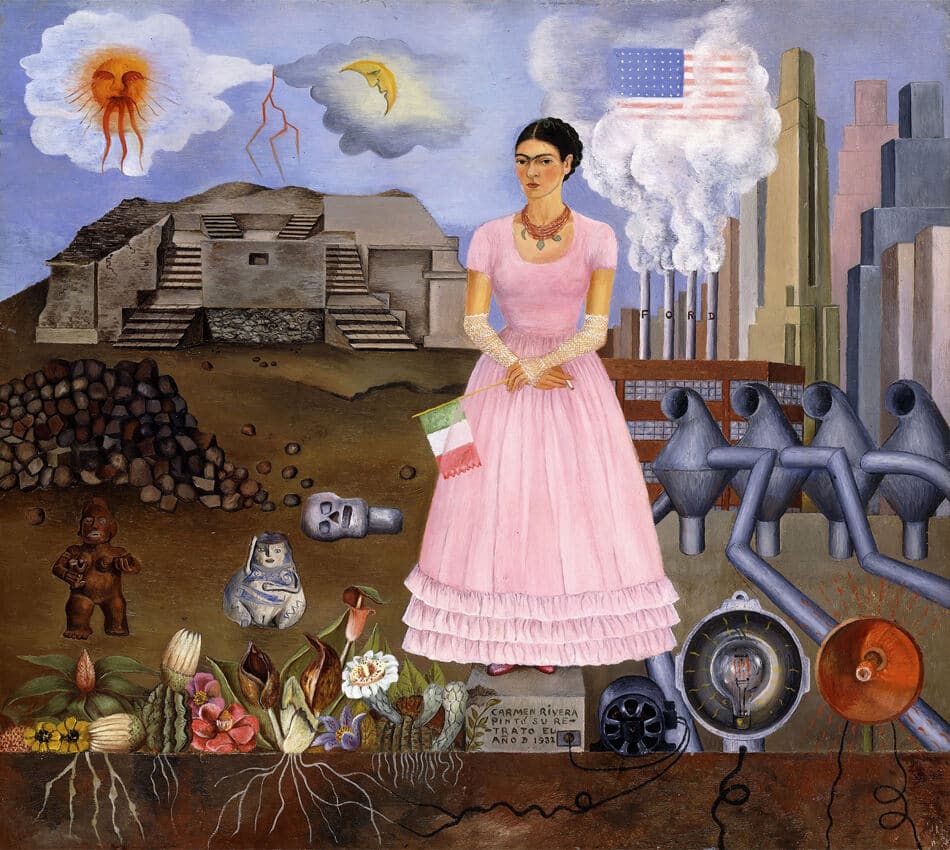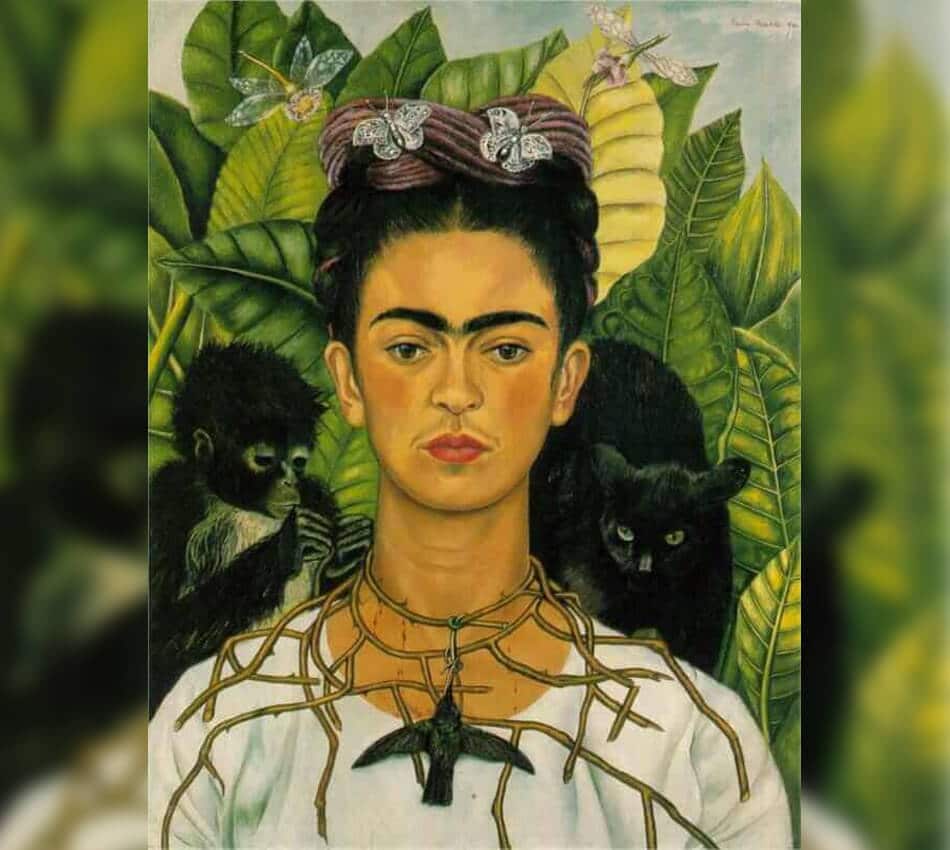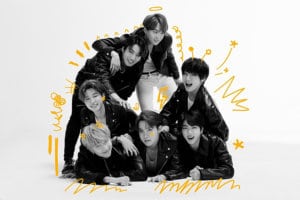
Frida Kahlo, one of the important painters of the twentieth century and icons of popular culture of the twenty-first century, is known for her bumpy life, political opinion and style that she often refers to in her works. Frida Kahlo’s struggle for life had enabled her to become an ever-growing and groundbreaking artist who influenced every moment and art of her life, starting from childhood. We are all closely studying the art and self-portraits of Frida Kahlo together.
Frida Kahlo in her early life

Frida, who had a lively childhood, contracted polio at the age of 6 and had a tram accident that changed her whole life at the age of 18. While the treatment process was continuing after the accident, he began to be involved in art and political circles.
In the process, Frida had transferred the pain in her body to her art with all her might. She had reflected all the physical and emotional wear and tear he had experienced on her art as revolutionary, traumatic and tragic. Frida’s art is reflected in the concerns she has about her country, except for her physical and emotional shocks. She had always been an artist fighting for her cultural identity.
Frida reveals her own reality with all its nakedness in her works. She conveys her pain, death wish, love, lost children, her turbulent relationship with Diego and the imaginary structure behind them with all its naturalness.
“I paint myself because I’m often alone, because that’s what I do best.”
Self Portrait Along the Borderline Between Mexico and the United States (1932)

Frida depicts where she is and where her heart belongs in this work. While she was painting, Diego Rivera was working on a mural at the Detroit Institute of Art. When we look at the details of the table, the plants and machines on the ground show the tension between Mexico’s agricultural culture and the industrialization of the USA. The flag in Frida’s hand shows her devotion to her country, and the cigarette is there as an indication of defiance. Frida Kahlo stands on a US-Mexico border stone.
Two Fridas (1939)

Among the famous works of Frida “Two Frida” depicts two different personalities in her self-portrait. Frida wrote about this work in her diary that she revived the memory of an imaginary childhood friend, but after a certain time she confessed that she was painting the pain and loneliness she suffered after breaking up with Diego. The body language and holding hands of Fridas in the center of the painting show us that they share the same grief.
Self-Portrait with Cropped Hair (1940)

After her divorce with Diego, Frida made a self-portrait and portrayed herself as Diego in this work. We are used to seeing her as feminine in Frida’s self-portraits, but in this work she wears a suit similar to Diego’s and cuts her hair. The hair she holds in her left hand is the symbol of sacrifice, it indicates her sacrifice in this relationship. Lyrics written on the table; “Look, if I loved you it was for your hair, now you’re bald, I don’t love you anymore.”
Self-portrait with Necklace of Thorns (1940)

In her other famous work, the painting “Self-portrait with Necklace of Thorns”, Frida carries the thorns worn on Christ when she was crucified as a necklace. The thorns sinking into her neck symbolize the pain of her divorce from Diego Rivera. On her left shoulder is a cat symbolizing evil, and on her right shoulder is a monkey, a gift from Diego. Monkeys, which often appear in her self-portraits, also symbolize the artist’s longing to have children.
Self Portrait, Dedicated to Dr. Eloesser (1940)

Frida Kahlo has used the rhetoric of Catholicism in this work, she has processed the frightening details from the Spanish Catholicism in her work. She presents the suffering of the devotees to us as a combination with reality. The work is a tribute to Frida’s thorn necklace, self potrait with Necklase of Thorns she made the same year, but contains less thorns and blood. The earrings included in the work are a gift of Picasso to her.
Me and My Parrot (1941)

Frida and Diego remarried shortly after their separation, but continued to live separately. Kahlo, on the other hand, continues her life in the countryside with the flowers and animals she is interested in. Frida only refers to the colors of her life with her parrots. At that time, she had photographer Nickolas Muray in her life.
Self Portrait as a Tehuana (1943)

Frida started painting this work shortly after her divorce with Diego and completed it in 1943. This work is also known as Thinking of Diego. The work is about Frida’s desire to have Diego, whom she knows about her relationship with other women. Frida can’t help thinking about him. Obsessive love is expressed in the portrait of Diego on her forehead. In the work, Frida’s traditional “Mexican Tehuana” is worn, and Diego is obsessed with this outfit. Networks symbolize networks that have been or should be established between Diego and herself.
Thinking About Death (1943)

Frida began to have severe health problems in the last years of her life. During the period when she is painting this painting, she spends most of her day in bed due to health problems. During this period, the thought of death greatly influenced her works. In Mexican culture, death also means rebirth. The plants that Frida placed behind her portrait symbolize rebirth. The artist perceives death as a continuation of life into another dimension.
Roots (1943)

In this work, Frida reveals the idea that life converges at one point. She represented her body as if nature gave birth. She did not have a child even though she wanted so much, and although she could not feed her child, she feeds the soil with her blood in this work.
The Broken Column (1944)

Pain is an invariable subject in Frida’s works. In this work, she presented her pain with all its openness and frightening. She is beautiful and strong despite the accidents and illnesses she went through and the bodily deformation she had. The work invites itself and its audience to face these pains.
Without Hope (1945)

In this work, Frida Kahlo talked about the period when she had to follow a nutrition program with a doctor’s prescription. On the back of the work it is written: I don’t have the slightest hope… Everything moves according to what the hub contains.“ During the period when she made the painting, her doctor prescribed her a full bed rest and a diet in which it is mandatory to eat porridge as food. In this work, Frida describes how difficult this period of “forced feeding” is for her.
The Wounded Deer (1946)

In this work, Frida Kahlo depicted her own face on the body of a mortally wounded young deer. The rotten trees in the background reflect the feeling of fear and helplessness. In 1946, when she made this painting, Frida had surgery on her spine. While the surgery should have relieved her of her pain, what she thought did not happen, and this reflected her disappointment in her work. Frida modeled her pet deer “Granizo” while drawing this self-portrait. On May 3, 1946, Frida gave this painting to her friends Lina and Arcady Boitler as a wedding present. She added a note next to it: I leave you my portrait so that you will be with me all the days and nights I am away from you. ”
If you want to learn more about Frida Kahlo’s works and life, you can visit the 2002 film directed by Julie Taymor, about the life of Frida Kahlo. Frida, you can watch the movie.
Sigmund Freud: The Life and Theories of Freud, the Founder of Psychoanalysis
Eckhart Tolle: The Essence of His Life, Career, Books and Teachings














